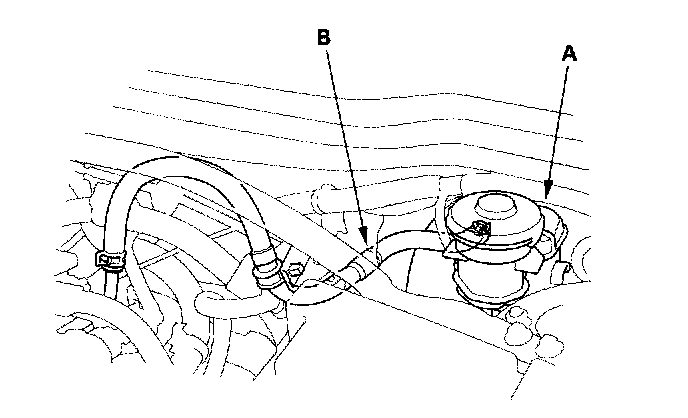Vacuum Brake Booster: Testing and Inspection
Brake Booster TestFunctional Test
1. With the engine stopped, press the brake pedal several times to deplete the vacuum reservoir, then press the pedal hard, and hold it for 15 seconds. If the pedal sinks, either the master cylinder is bypassing internally, or the brake system (master cylinder, lines, modulator, or caliper) is leaking.
2. Start the engine with the brake pedal pressed. If the pedal sinks slightly, the vacuum booster is operating normally. If the pedal height does not vary, the booster or check valve is faulty.
3. With the engine running, press the brake pedal lightly, and shift the transmission to the D position. Apply just enough pressure to hold back automatic transmission creep. If the brake pedal sinks more than 10 mm (3/8 inch) in 3 minutes, the master cylinder is faulty. A slight change in pedal height when the A/C compressor cycles on and off is normal. (The A/C compressor load changes the vacuum available to the booster.)
Leak Test
1. Press the brake pedal with the engine running, then stop the engine. If the pedal height does not vary while pressed for 30 seconds, the vacuum booster is OK. If the pedal rises, the booster is faulty.
2. Turn the engine off, and wait 30 seconds. Press the brake pedal several times using normal pressure. When the pedal is first pressed, it should be low. On consecutive applications, the pedal height should gradually rise. If the pedal position does not vary, check the booster check valve.

3. Disconnect the brake booster vacuum hose at the booster (A). The check valve (B) is built into the hose.
4. Start the engine, and let it idle. There should be vacuum available. If no vacuum is available, the check valve is not working properly. Replace the brake booster vacuum hose and check valve, and retest.
5. Start the engine, and then pinch the brake booster vacuum hose between the check valve and the booster.
6. Turn the engine off and wait 30 seconds. Press the brake pedal several times using normal pressure. When the pedal is first pressed, it should be low. On consecutive applications, the pedal height should gradually rise.
^ If the pedal position does not vary, replace the brake booster.
^ If the pedal position varies, replace the brake booster vacuum hose/check valve assembly.